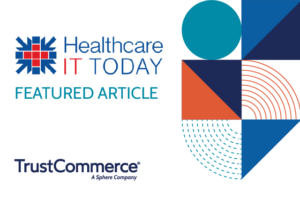Many patients struggle to afford medical bills due to social determinants of health (SDoH) factors beyond their immediate control, but providers can take steps to increase transparency to help patients pay bills.
What are social determinants of health? SDoH are defined as “the conditions in the environments where people are born, live, learn, work, play, worship, and age that affect a wide range of health, functioning, and quality-of-life outcomes and risks,” according to the U.S. Department of Health and Human Services.
What are examples of social determinants of health? Common SDoH include financial strain, housing instability and poor quality, food insecurity, lack of access to healthcare, and inadequate educational opportunities. Patients who experience SDoH face higher risks of exacerbating health conditions like heart disease, stroke, depression, cancer, and diabetes, according to the U.S. Playbook to Address Social Determinants of Health.
Because most SDoH are associated with economic cause and effect, these factors significantly affect patients’ ability to pay for – and ultimately access – medical care.
However, providers can adopt the following digital tools to help make it easier for patients experiencing SDoH factors, in order to pay for medical expenses:
Flexible patient payment plans: In some cases, payment plans may enable patients to access care they may have otherwise had to forego due to high costs. As opposed to paying all at once up-front, patients gain the opportunity to pay over a specified time period, potentially enabling them to access care earlier before their medical conditions grow worse and become more expensive to manage.
For providers, patient financing needs are an important consideration for procedures that are not covered by insurance, such as elective services, which patients must pay for out of their own pockets. By offering payment plans, providers increase the likelihood of payment for delivery of high-cost procedures, whether up-front or over a specified time period.
Pre-service cost estimates: For pre-service check-ins, patients are sent a message in their preferred channel that contains a link confirming several key pieces of data: demographic information, insurance and benefits coverage, copay and service amount estimates based on visit type. Healthcare providers may also elect to give patients the option of confirming this information before the visit, at an on-site kiosk. By offering pre-service cost estimates, providers are likely to increase the percentage of payment collected overall and prior to appointments.
Healthcare consumerism and next-generation payment methods: Accustomed to being afforded flexibility in how they make payments when shopping online or in-person with retailers, consumers are beginning to expect the same from healthcare providers. As a result, providers have become more willing to embrace and accept next-generation payment methods like digital wallets, such as Apple Pay, PayPal, and Google Pay, and buy-now-pay-later (BNPL) plans, which are especially helpful for procedures or medications with high out-of-pocket costs.
Social determinates of health are a pervasive national problem that require numerous, multifactored solutions, but healthcare providers can do their part by offering patients flexible payment plans, pre-service cost estimates, and next-generation payment methods.
To continue exploring the impact of the SDoH, unaffordable medical bills and the effects of rising healthcare costs on Americans, download our free eBook, Unaffordable Medical Bills as a Social Determinant of Health or reach out to TrustCommerce to learn how you can embrace next-generation payment methods for your patients.






